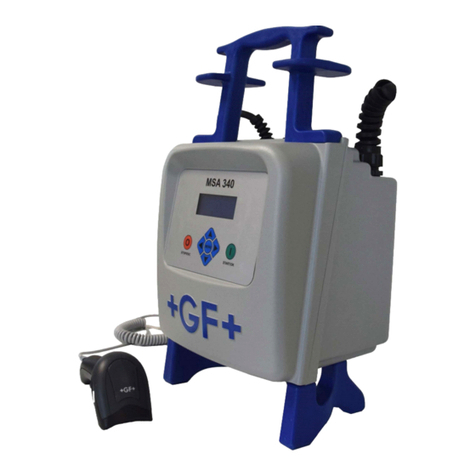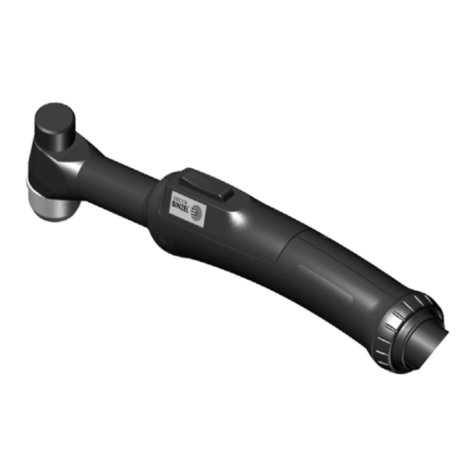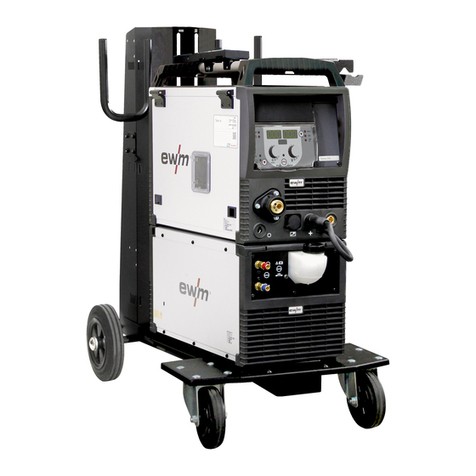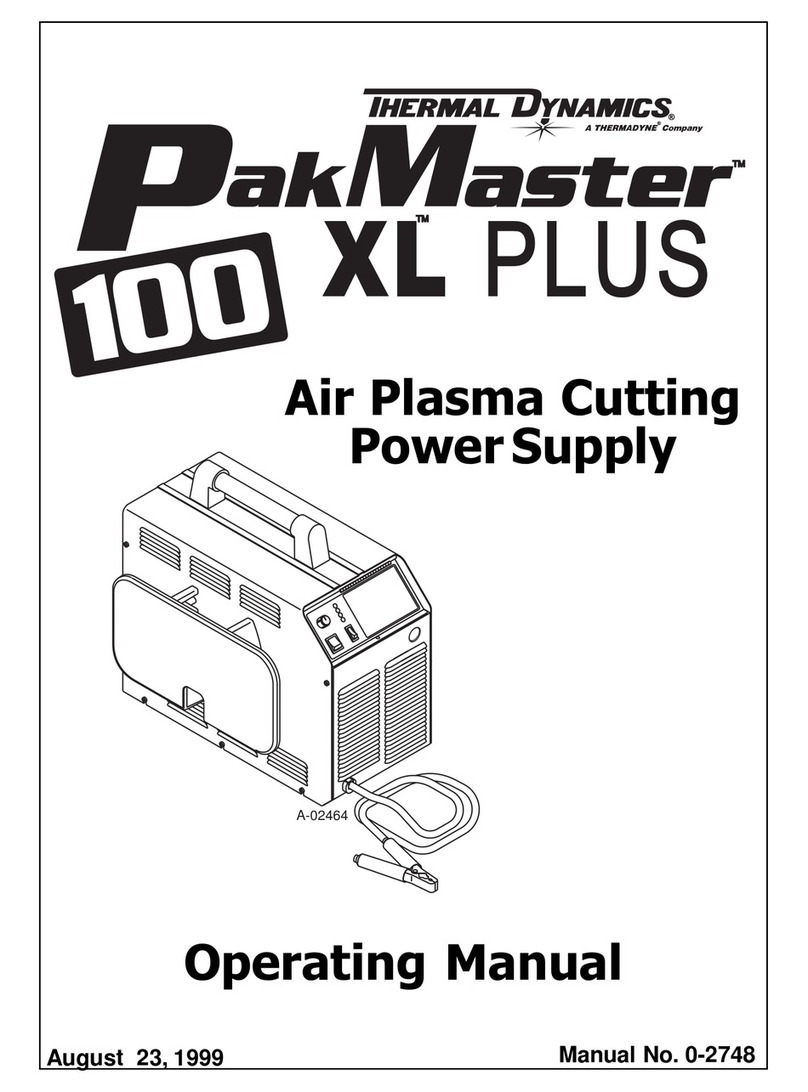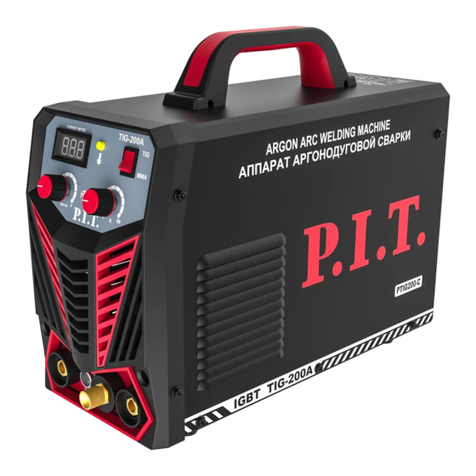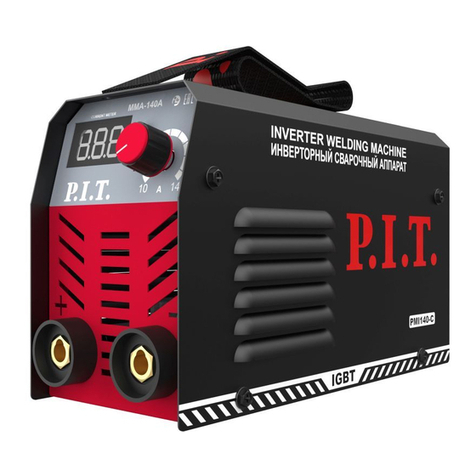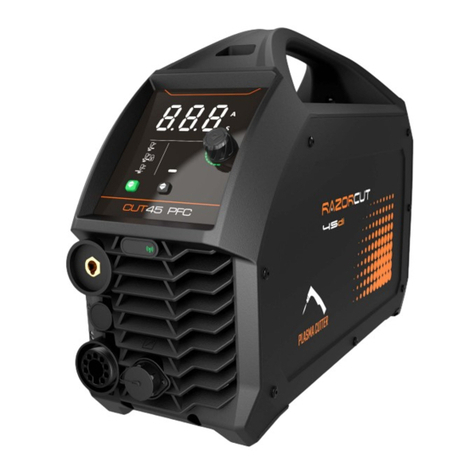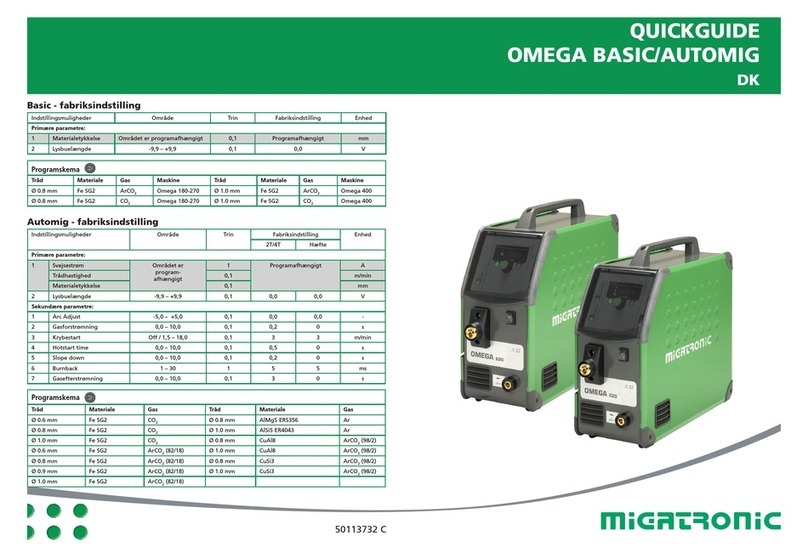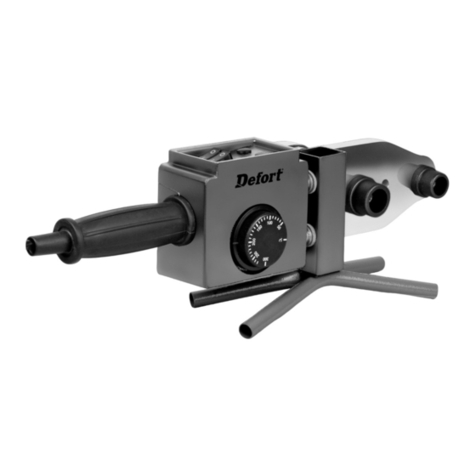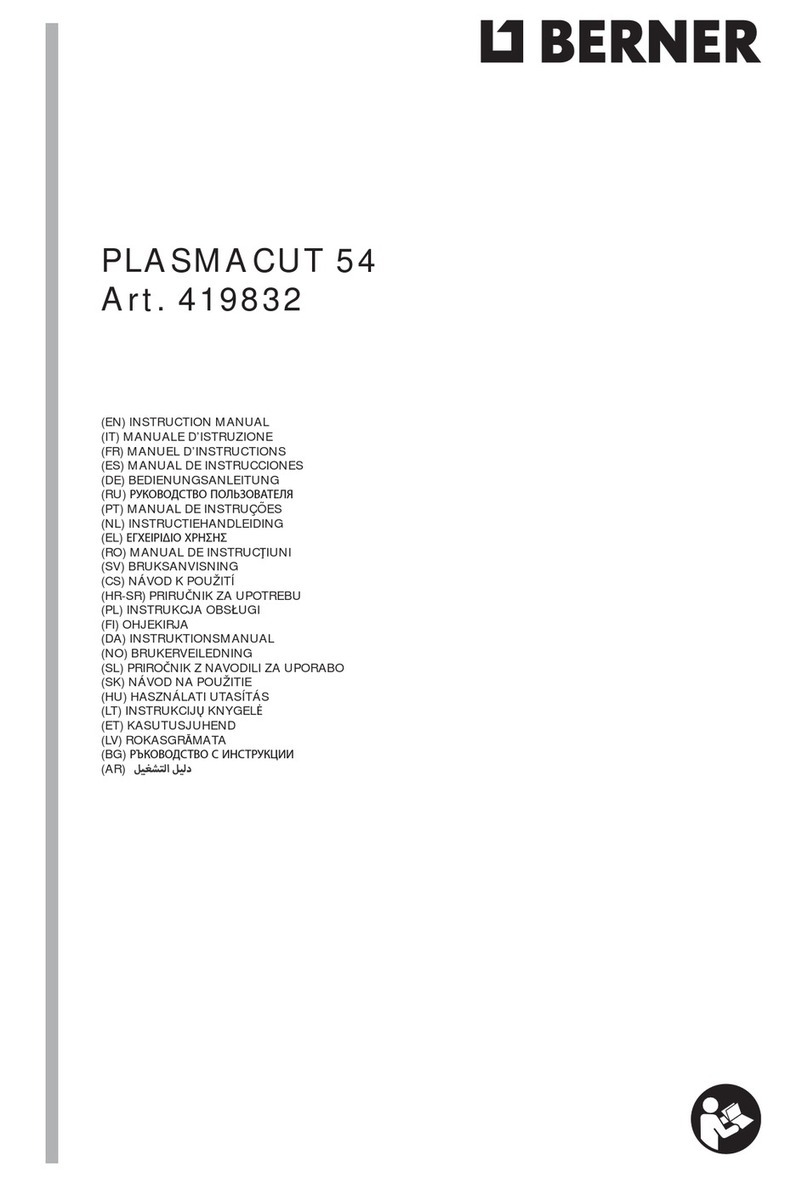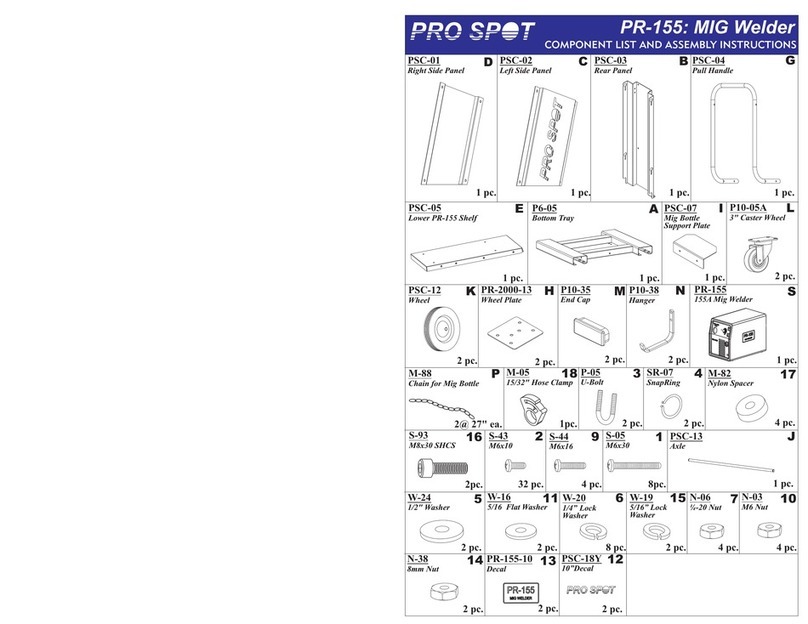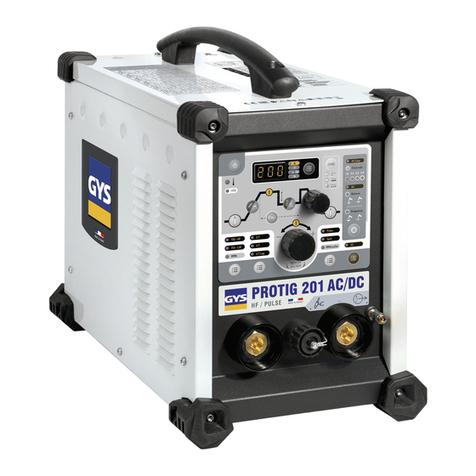
Automatic Welding Machine
8
Welding without gas (NO GAS)
with self-shielded flux-cored wire:
– Connect the short cable with the connector
located at the bottom of the front panel of
the device to the right connector on the
front panel (“-” terminal).
– Fix the grounding terminal on the work
piece to be welded, connect the connector
on the other end of the cable to the left
connector on the front panel (“+” terminal).
– Check the markings on the feed roll ac-
cording to the wire diameter being used.
– Insert the spool of wire into the slot.
– Feed the wire into the torch by folding
back the roll clamp and inserting the wire
into the channel through the recess in the
roll.
– Close the roller clamp by slightly tightening
the clamping screw.
– Make sure to match the hole diameter of
the gun tip to the wire diameter.
– Turn on the machine and run the wire until
it exits the tip by pressing the trigger on
the torch.
– Set the required welding mode using the
controls.
Welding process
Set the welding current based on the thick-
ness of the material to be welded and the
diameter of the electrode wire used. The wire
feed speed is automatically synchronized with
the welding current. Move the torch to the
workpiece so that the wire does not touch the
workpiece, but is at a distance of several mil-
limeters from it. Press the torch button to light
the arc and start welding. The pressed key
ensures the feed of the electrode wire and the
flow of shielding gas set by the reducer.
The length of the arc and the speed of move-
ment of the electrode affect the shape of the
weld.
Replaceable polarity operation
Initially, the power contact of the welding torch
is connected to “+” on the polarity reversal
module. This is REVERSE POLARITY. It is
used for welding thin sheet steel to stainless
steels, alloy steels and high carbon steels,
which are very sensitive to overheating.
During DIRECT POLARITY welding, most of
the heat is concentrated on the product itself,
which causes the root of the weld to deepen.
To change the polarity from reverse to direct,
it is necessary to switch the output of the
power wire on the module from “+” to “-”. And
in this case, connect the cable with the earth
clamp to the workpiece by inserting the pow-
er cable lug into the “+” terminal on the front
panel.
For welding with flux cored wire without
shielding gas, DIRECT POLARITY is used. In
this case, more heat goes to the product, and
the wire and the welding torch channel heat
up less.
At the end of welding:
– Remove the torch nozzle from the seam,
interrupting the welding arc;
– Release the torch trigger to stop the wire
and gas feed;
– Disconnect the gas supply by shutting off
the gas supply valve from the cylinder re-
ducer;
– Move the switch to the “off” position - off
Manual arc welding mode (mma)
1. Connect the electrode holder to the “-”
terminal of the device, the grounding cable to
the “+”
terminal of the device (direct polarity), or vice
versa, if required by the welding conditions
and / or the brand of electrodes:
In manual arc welding, two types of connec-
tion are distinguished: direct polarity and
reverse. Connection “direct” polarity: elec-
trode - “minus”, welded part - “plus”. Such
a connection and a straight polarity current
are appropriate for cutting metal and welding
large thicknesses that require a large amount
of heat to warm them up.
“Reverse” polarity (electrode - “plus”, part
- “minus”) is used when welding small thick-
nesses and thin-walled structures. The fact
is that at the negative pole (cathode) of an
electric arc, the temperature is always lower
than at the positive (anode), due to which the
electrode melts faster, and the heating of the
part decreases - and the danger of its burnout
is also reduced.
2. Set the mode switch to MMA position.
3. Set the welding current according to the
type and diameter of the electrode and start
welding.
4. The welding current is regulated by the cur-
rent regulator, the actual value of the current
during operation is displayed on the ammeter
display.
5. Excitation of the arc is carried out by brief-
ly touching the end of the electrode to the
product and withdrawing it to the required dis-
tance. Technically, this process can be done
in two ways:

